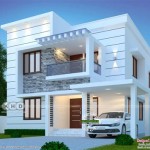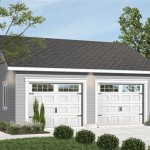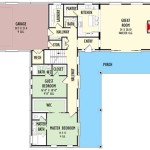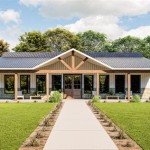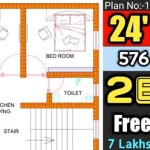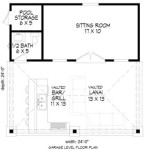3000 Square Feet Contemporary House Plans: A Comprehensive Guide
Contemporary house plans, especially those around 3000 square feet, represent a popular choice for families seeking a balance between spaciousness and manageable upkeep. These designs often prioritize open living spaces, clean lines, and incorporating natural light to create a comfortable and aesthetically pleasing environment. Understanding the key elements and considerations involved in selecting and implementing a 3000 square feet contemporary house plan is crucial for a successful home-building or renovation project.
The "contemporary" architectural style itself is often confused with "modern" architecture. While both emphasize clean aesthetics, contemporary design is more fluid and adaptable to current trends and technological advancements. It incorporates elements from various styles, resulting in a diverse range of design possibilities. This adaptability makes contemporary house plans appealing for individuals with distinct preferences and lifestyles.
A 3000 square feet house provides ample space for various configurations, typically accommodating three to five bedrooms, multiple bathrooms, a dedicated home office, a spacious kitchen, and several living or recreational areas. The overall design will significantly impact the functionality and flow of the house, making careful planning essential. Factors such as family size, lifestyle, and budget will heavily influence the final design choices.
Key Point 1: Understanding the Layout and Floor Plan Options
The layout of a 3000 square feet contemporary house is paramount to its livability. Several floor plan variations cater to different needs and preferences. Common layouts include ranch-style, two-story, and split-level designs, each presenting unique advantages and disadvantages.
Ranch-style homes, characterized by their single-story design, offer ease of access and often feature an open floor plan. For a 3000 square feet ranch, this translates to expansive living areas and potentially lower construction costs due to the simpler foundation. However, the larger footprint might require a larger lot, and accessibility to different areas of the house necessitates longer walks.
Two-story homes maximize the use of land space by stacking living areas vertically. This layout is beneficial for smaller lots or for separating living areas from bedrooms. A 3000 square feet two-story home can offer distinct zones for family activities and private relaxation. Potential drawbacks include the need for stairs, which may be a concern for individuals with mobility issues, and potentially higher initial construction costs.
Split-level designs offer a compromise between ranch and two-story layouts. They typically feature staggered floors connected by short flights of stairs. This can create a sense of separation while maintaining a relatively compact footprint. Split-level homes can be well-suited for sloping lots. However, the multiple short staircases might not be ideal for families with young children or elderly individuals.
Within each of these layouts, the arrangement of rooms and their connectivity is equally important. Open floor plans, a hallmark of contemporary design, often combine the kitchen, dining, and living areas into a single, unified space. This promotes social interaction and creates a sense of spaciousness. However, it also requires careful consideration of noise levels and the need for designated areas for specific activities.
Conversely, closed floor plans offer more privacy and separation between rooms. This can be beneficial for families who value quiet spaces or those who frequently entertain guests. However, closed floor plans can feel less spacious and might limit natural light flow. The optimal layout will depend on the specific needs and preferences of the homeowners, balancing the desire for open spaces with the need for privacy and functionality.
Key Point 2: Design Elements and Material Choices
The aesthetic appeal of a contemporary house hinges on its design elements and the materials used throughout the construction. Contemporary designs often feature clean lines, minimalist detailing, and a focus on natural light. Incorporating large windows, skylights, and open floor plans can maximize the amount of natural light entering the house, creating a bright and inviting atmosphere.
Exterior materials commonly used in contemporary homes include wood, stone, brick, and metal. These materials can be combined to create visually interesting facades with a focus on texture and contrast. For example, a combination of wood siding and stone accents can create a warm and inviting exterior, while metal cladding can impart a more modern and industrial aesthetic. The choice of exterior materials should also consider local climate conditions and long-term maintenance requirements.
Roofing options for contemporary homes often include flat roofs, gable roofs with minimal overhang, and shed roofs. Flat roofs, while visually appealing, require careful attention to drainage and waterproofing. Gable roofs offer a more traditional look and are generally more resistant to weather damage. Shed roofs, characterized by their single sloping plane, can create a unique architectural statement and allow for ample natural light through clerestory windows.
Interior design elements in contemporary homes often emphasize simplicity and functionality. Neutral color palettes, such as whites, grays, and beiges, are commonly used to create a clean and modern backdrop. These neutral tones can be accented with pops of color through artwork, furniture, and accessories. Hardwood floors, tile, and concrete are popular flooring choices, each offering different aesthetic and functional characteristics. Hardwood floors provide warmth and elegance, while tile is durable and easy to maintain. Concrete floors offer a more industrial look and can be stained or polished to achieve a variety of finishes.
The selection of interior finishes, such as countertops, cabinetry, and lighting fixtures, also plays a crucial role in defining the overall aesthetic of the house. Quartz and granite are popular countertop materials due to their durability and aesthetic appeal. Cabinetry should be simple and functional, with clean lines and minimal ornamentation. Lighting fixtures should be chosen to complement the overall design and provide adequate illumination. Recessed lighting, pendant lights, and track lighting are common choices for contemporary homes.
Key Point 3: Energy Efficiency and Sustainability Considerations
In today's world, energy efficiency and sustainability are increasingly important considerations in home design. Contemporary house plans can incorporate numerous features to minimize energy consumption and reduce environmental impact. Designing a 3000 square feet house with sustainability in mind often leads to long-term cost savings and a positive impact on the environment.
Passive solar design is a key strategy for maximizing energy efficiency. This involves orienting the house to take advantage of the sun's natural heat and light. South-facing windows can capture solar heat during the winter months, while proper shading can prevent overheating during the summer. Overhangs, awnings, and strategically placed trees can provide effective shading. The size and placement of windows should be carefully considered to balance natural light with heat gain and loss.
Insulation is another critical factor in energy efficiency. Proper insulation in walls, roofs, and floors can significantly reduce heat transfer, keeping the house cooler in the summer and warmer in the winter. High-performance windows and doors can further minimize heat loss and gain. Energy-efficient appliances and lighting fixtures can also contribute to significant energy savings. LED lighting, for example, consumes significantly less energy than traditional incandescent bulbs.
Sustainable building materials can further reduce the environmental impact of the house. Bamboo flooring, recycled content materials, and locally sourced materials are all examples of sustainable choices. Using low-VOC (volatile organic compound) paints and finishes can improve indoor air quality and reduce exposure to harmful chemicals. Water conservation measures, such as low-flow toilets and showerheads, can help conserve water and reduce utility bills.
Renewable energy sources, such as solar panels and geothermal systems, can provide clean and sustainable energy for the house. Solar panels can generate electricity, while geothermal systems can provide heating and cooling. Although the initial investment in these systems can be significant, they can offer long-term cost savings and reduce reliance on fossil fuels. In addition to these energy-efficient and sustainable features, a well-designed landscaping plan can also contribute to the overall sustainability of the house. Planting native trees and shrubs can provide shade, reduce water usage, and create habitat for local wildlife.
In conclusion, developing a 3000 square feet contemporary house plan requires careful consideration of layout, design elements, material choices, and energy efficiency. By focusing on these key aspects, homeowners can create a comfortable, stylish, and sustainable living space that meets their individual needs and preferences. A thorough understanding of these factors will enable informed decision-making throughout the design and construction process, resulting in a home that is both beautiful and functional for years to come.

Contemporary Style Home Architecture 3000 Sq Ft Kerala House Design Small Elevation

3 000 Square Foot House Plans Houseplans Blog Com

List Of 3000 To 3500 Sq Ft Modern Home Plan And Design With 4 Bedroom House Plans

3000 Square Foot Mid Century Modern House Plan With Outdoor Lounge 36671tx Architectural Designs Plans

3 000 Square Foot House Plans Houseplans Blog Com

3 Bed 3000 Square Foot Contemporary Craftsman Home Plan With Covered Lanai 33248zr Architectural Designs House Plans

Modern Contemporary Home Design Ideas In 4 Bedroom House

Modern House Plans Between 2500 And 3000 Square Feet

55 Best 2501 3000 Square Feet House Designs

Modern Style Home Design Ideas Plan New Model Interiors 3000 Square Feet Duplex House

